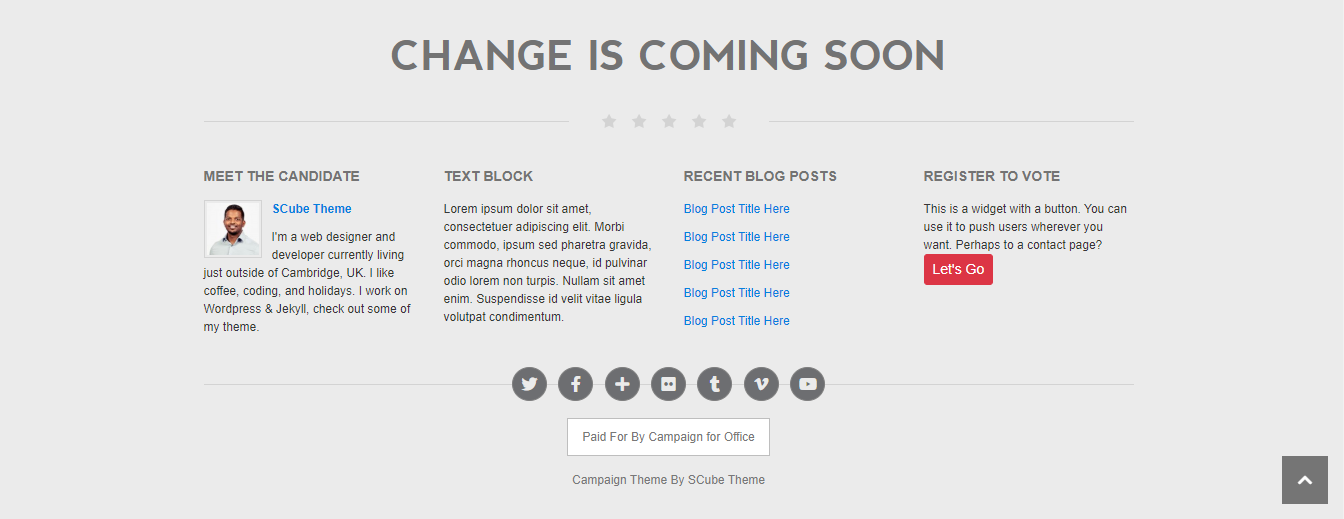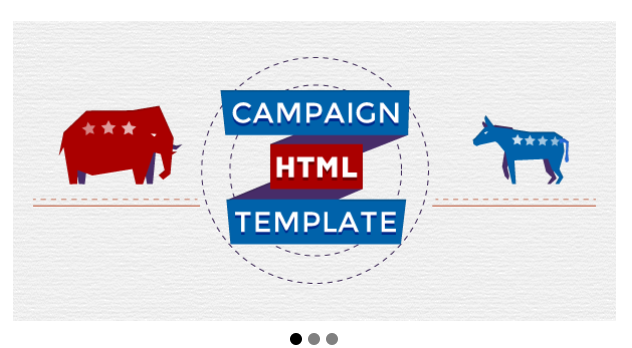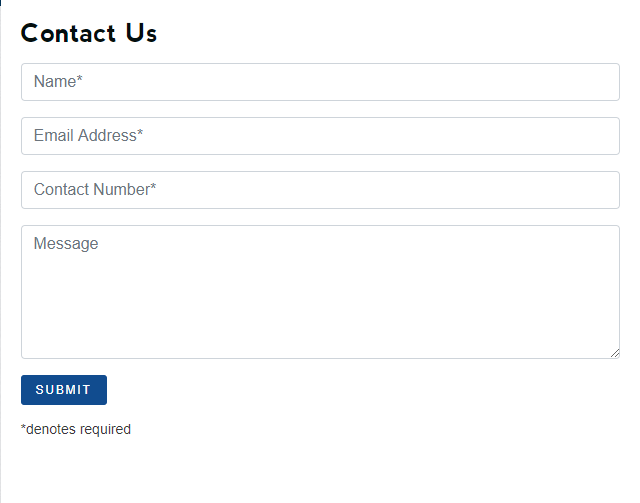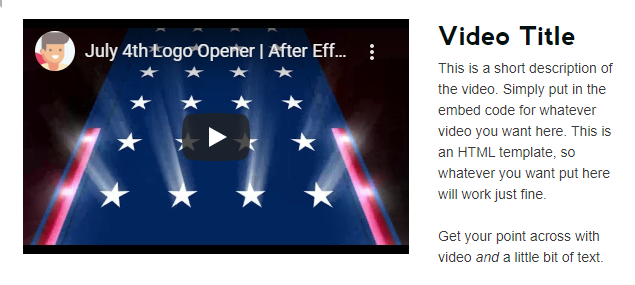Campaign Jekyll Theme Documentation
- Created On: 20/03/2020
- Last Changed: 20/03/2020
- Current Version: 1.0.0
- Developed By: Scube Themes
- Theme Support: http://go.scube.co/campaign-js
Introduction
Campaign is a Political Jekyll website template.
Thank you for purchasing the theme. We provide support for all of our themes at http://go.scube.co/campaign-js, but please make sure you read this documentation in it's entirety first. Thanks again!
Theme Installation
Installing The Theme
- Copy the theme files to your website directory.
- To run the theme locally, navigate to the theme directory in your terminal
- Run bundle install to install the theme's dependencies.
- Then run jekyll serve to start the Jekyll server.
- If any error occurs click here to troubleshoot.
Plugins
Installed Plugins
- Jekyll Feed plugin: This plugin is used to generate an Atom (RSS-like) feed of your Jekyll posts. Click here to know about the plugin.
- Jekyll SEO Tag: This plugin add metadata tags for search engines and social networks to better index and display your site's content. Click here to know about the plugin.
- Jekyll Paginate V2: This plugin is used for pagination. Pagination generates paginated pages for all your tags, categories and collections. Click here to know about the plugin.
Note: Required Plugins are Mandatory. The theme will not work properly, if its not installed & activated.
Configuration Options Setup
Manage the configuration setup in _config.yml file.
Basic Settings
title: Campaign Jekyll Template
description: >- # this means to ignore newlines until "baseurl:"
Campaign Jekyll Template
- title: Use website title here.
- description: Use website description here.
Logo & Favicon Settings
This section has options to setup Logo & Favicon.
# Logo & Favicon Settings
logo: /assets/images/campaignlogo.png # Use logo icon here
logo-width: # Use logo width here (default 150px)
favicon: /assets/images/favicon.png # Use favicon here
- logo: Use logo to displays in the header section.
- logo-width: Add the width for the logo.
- favicon: Upload a favicon for the website.
Header
- Campaign Header is created as an include, which is included in _layout > default.
- On page include use
{% include do-header.html %} - Campaign Header consists of 4 items: Logo/Site Title, Search bar, Menu, Donation Butoon.
- Logo/Site Title: You can add logo and it's width in _config.yml > Logo & Favicon Settings tab. Click here for more information.
- Menu: To add in header menu, _data > do-menu.yml. Click here for more information.
- Search Bar: Search bar is used to search the file.
- Donation Button: User can donate the money using the donate button.
{% include do-head.html %}
<body class="content_left bg_linen body_boxed scheme_blue">
{% include do-switcher-button.html %}
<div class="pre-header"></div>
{% include do-header.html %}
<section class="cp-section">
<div class="container">
<div class="row">
<div class="col-md-8 content-order extra-padding the-blog">
{{ content }}
</div>
<div class="col-md-4 sidebar">
{% include do-side-widget.html %}
</div>
</div>
</div>
</section>
{% include do-footer.html %}
{% include do-footer-script.html %}
Campaign - A Political Jekyll Theme.
Campaign is a Political Jekyll website template.
Thank you for purchasing the theme. We provide support for all of our themes at http://go.scube.co/campaign-js, but please make sure you read this documentation in it's entirety first.
Thanks again!







